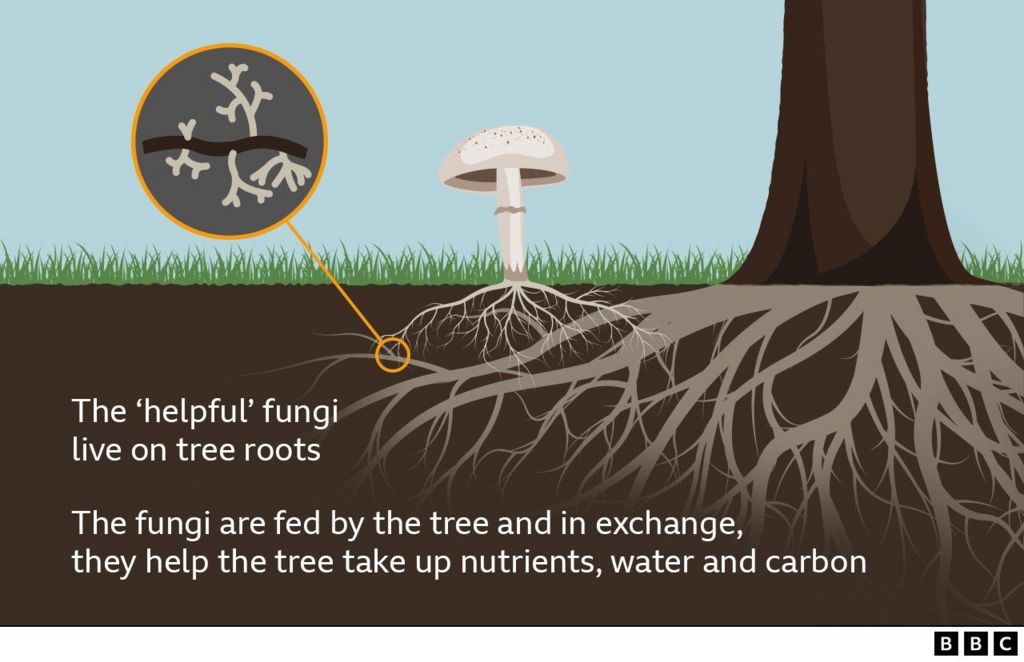Fungi are an integral component of terrestrial ecosystems, engaging in complex interactions with plants that yield multifaceted benefits to their growth and development. Their role extends far beyond mere symbiosis; they are crucial agents of nutrient exchange, disease resistance, and plant health. This article elucidates the various mechanisms through which fungi augment plant growth in diverse ecosystems, exploring mycorrhizal symbiosis, fungal bioremediation, and their contributions to soil health.
Mycorrhizal Symbiosis: An Unseen Alliance
Mycorrhizae, the symbiotic relationships between fungi and plant roots, represent one of the most significant interactions in the plant kingdom. This partnership is predominantly characterized by two major types: ectomycorrhizae and arbuscular mycorrhizae, each playing pivotal roles in enhancing nutrient uptake.
Ectomycorrhizae typically associate with the roots of woody plants, forming a sheath around them. This structure facilitates the absorption of essential nutrients, particularly phosphorus and nitrogen, from the soil—a process often limited by the availability of these elements in complex soil matrices. These fungi extend their hyphal networks into the surrounding soil, creating a vast underground web that effectively increases the surface area for nutrient absorption, thereby enabling the host plants to access resources distant from their root systems. Consequently, plants affiliated with ectomycorrhizal fungi exhibit improved vigor, higher growth rates, and enhanced drought resilience.
On the other hand, arbuscular mycorrhizae penetrate plant root cells and form structures known as arbuscules, which serve as sites for nutrient exchange. This intraradical association is renowned for its ability to enhance the uptake of micronutrients such as zinc and copper, which are critical for numerous physiological processes in plants. In return, fungi receive carbohydrates and other organic compounds from the host plant, fostering a mutually beneficial exchange that is essential for their survival and proliferation in nutrient-poor environments.
Furthermore, the mycorrhizal association fosters plant resilience against pathogenic organisms. By enhancing the root system’s ability to absorb water and nutrients, mycorrhizal fungi bolster plant health, making them less susceptible to diseases. Additionally, some fungi produce antimicrobial compounds that deter pathogen invasion, further safeguarding plant integrity.
Fungal Bioremediation: Nature’s Detoxifiers
In the realm of environmental restoration, fungi emerge as potent bioremediators, capable of degrading pollutants and enhancing soil fertility. This process is especially vital in disturbed ecosystems where contamination impedes plant growth. Fungi possess the enzymatic machinery necessary to break down a plethora of organic pollutants, including hydrocarbons, heavy metals, and pesticides.
White-rot fungi, in particular, are renowned for their ligninolytic capabilities, facilitating the degradation of complex organic compounds. This enzymatic activity not only detoxifies the soil but also contributes to the organic matter content, thereby improving the soil structure and increasing its capacity to retain moisture and nutrients. The byproducts of this degradation process can transform toxic substances into non-toxic forms, enabling a more hospitable environment for plant roots and promoting germination.
Through mycelial networks, fungi can exchange nutrients with plant roots, creating a synergistic relationship that enhances the bioremediation process. For instance, plants can uptake the nutrients released by decomposed organic matter while simultaneously benefiting from improved soil quality. This interdependence amplifies the rehabilitation of ecosystems ravaged by pollution, demonstrating the pivotal role of fungi in ecological recovery.
Soil Health and the Fungal Contribution
The health of an ecosystem is intrinsically linked to the quality of its soil, and fungi play an indispensable role in maintaining soil health. They facilitate soil structure stabilization through their extensive hyphal networks, which bind soil aggregates together. This improved structure promotes aeration and water infiltration, creating an optimal microenvironment for plant roots to thrive.
Moreover, fungi are key agents in the carbon cycle. Through the decomposition of organic matter, fungi release carbon dioxide back into the atmosphere while simultaneously enriching the soil with humic substances. These humic substances enhance nutrient availability and help retain moisture, contributing to the overall fertility of the ecosystem.
Fungi also engage in a complex relationship with bacteria in the soil. They can create conditions conducive to bacterial growth, which in turn aids in the breakdown of organic matter. The interplay between fungi and bacteria enhances nutrient cycling, leading to increased plant productivity and overall ecosystem stability.
Additionally, certain fungi can form “mycelial highways,” allowing for the exchange of nutrients and information between plant roots, facilitating a form of communication termed the “Wood Wide Web.” This network not only supports the growth of individual plants but can also promote species diversity and resilience across the ecosystem.
Conclusion: The Unsung Heroes of Ecosystems
In conclusion, the contributions of fungi to plant growth and ecosystem health are extensive and multifaceted. From the remarkable symbiotic relationships formed through mycorrhizae to their critical role in bioremediation and soil health preservation, fungi underscore the intricate web of life that sustains terrestrial ecosystems. As research continues to unravel the complexities of these interactions, the importance of fungi within ecological frameworks becomes increasingly evident. Emphasizing the conservation and responsible management of fungal diversity is essential to ensure the sustainability of ecosystems and the myriad of benefits they provide.
Through this exploration, it is clear that fungi are not merely background players in the drama of ecosystem dynamics; rather, they are vital protagonists that underpin the health and resilience of all living organisms. Understanding and harnessing these relationships may be key to addressing contemporary environmental challenges, including climate change and soil degradation.
